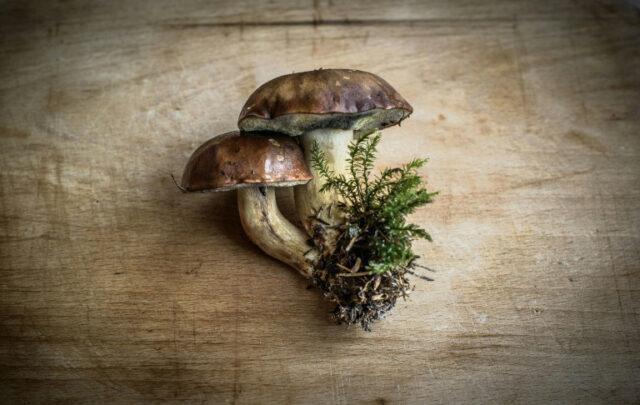 Stringing tomatoesWhen you teach classes at a community college that sits in the midst of a multicultural patchwork of neighborhoods at the edge of a great metropolis, you never know who will show up. Evening classes, which I often teach, are particularly diverse.
Stringing tomatoesWhen you teach classes at a community college that sits in the midst of a multicultural patchwork of neighborhoods at the edge of a great metropolis, you never know who will show up. Evening classes, which I often teach, are particularly diverse.
Matteo showed up one semester and sat in the front row, a stocky, round-faced, round-headed man, balding, with a fringe of white hair. His appearance, in itself, was not unusual, since students of all shapes and sizes present themselves, nor was his age, really, which I judged to be somewhere west of sixty-five. My classes frequently include students ranging in age from sixteen and not yet out of high school, to grandparents who are finally able to begin the college education they have always hoped for. Matteo said he’d come to the U.S. from Sicily at some undisclosed period in his youth, took a job, married, had children and then grandchildren–a pretty average story for this part of the world. Other than his self-confident air and loud voice, there was nothing to make me think about him too much.
This changed one evening when I talked about gardening, which I don’t teach. However, since I believe everything is connected, wherever I am, gardening and the environment get mentioned. At this, Matteo came alive. “Ms. Fisher, I didn’t know you are a gardener. I am too.”
“That’s nice,” I said. But Matteo persisted. In a subsequent conversation he discovered that, while I have an understanding of perennial food plants such as berries and herbs, I’m a newbie when it comes to serious annual vegetable gardening. He began to share his knowledge. Some he brought with him from Sicily, some he’s picked up elsewhere, and all has been honed in his modest backyard.
Matteo told me that when he was young he lived in a small town, in a house overlooking the sea. Though they had little money, they always ate well—his father was a tailor, his mother a seamstress, and people often paid for their clothes in kind. His mother would stop work earlier than his father in order to cook.
Matteo and his friends loved growing things, and they’d often walk out of town and visit nearby farmers to learn their methods. He also explained some of the games they played. One, an old tradition, seems to have combined twenty questions and tag, and you were to guess the name of various plants, both farmed and wild, by descriptions of appearance and use. More fun than school, he thought, and an excellent way to learn, since you got to run around. I couldn’t help contrasting this with the childhoods of many students I’ve met: they’ve learned to understand social media or what’s going down in celebrity-world, but not much at all about where they actually live. What are we teaching them that will be of help in a low-carbon future?
Wine
 Matteo, of course, brews his own wine. He wrote an essay with instructions, illustrated with an old photo in which he and his two sons stand by their wine press. His opinion is that for small batches, stomping the grapes really makes better wine. And not only did his essay include winemaking advice, but also explained that when it has aged and is ready to be decanted, you must invite your friends and relatives over for food and wine as a sort of celebration. Which seems as important as the process itself. How different this is from wineries I have visited I cannot begin to explain. Yet his enthusiasm was so infectious, that I began to feel that I, too, could make wine fit to drink.
Matteo, of course, brews his own wine. He wrote an essay with instructions, illustrated with an old photo in which he and his two sons stand by their wine press. His opinion is that for small batches, stomping the grapes really makes better wine. And not only did his essay include winemaking advice, but also explained that when it has aged and is ready to be decanted, you must invite your friends and relatives over for food and wine as a sort of celebration. Which seems as important as the process itself. How different this is from wineries I have visited I cannot begin to explain. Yet his enthusiasm was so infectious, that I began to feel that I, too, could make wine fit to drink.
Tomatoes
Matteo also grows tomatoes. It is hard to imagine Italian cuisine without them. The Romans made fish sauce, with a production center at Pompeii prior to Vesuvius’ great eruption, and similar food ways continued until tomatoes, that new world plant, arrived in Italy to revolutionize the old traditions in the 16th Century.
 It’s interesting to think about how food travels. One of my favorite recipes for cornbread—that American staple—is a Basque version that includes pureed pumpkin. Did a Basque person long ago get the recipe from someone in America and bring it home, only to export it back to the U.S.? An American Indian gardener once told me that this is what happened with many varieties of beans. Early European explorers took American beans home, where they became widespread, and then later settlers brought “their” beans back to America.
It’s interesting to think about how food travels. One of my favorite recipes for cornbread—that American staple—is a Basque version that includes pureed pumpkin. Did a Basque person long ago get the recipe from someone in America and bring it home, only to export it back to the U.S.? An American Indian gardener once told me that this is what happened with many varieties of beans. Early European explorers took American beans home, where they became widespread, and then later settlers brought “their” beans back to America.
But returning to tomatoes. Illinois is emphatically not Sicily. So how to get the required yields? While the neighbors wait until late May to put out their starts from the garden center, Matteo’s strategy is different. He’ll buy the starts, transplant them into pots and then keep them in his garage. On warm days he takes the tomatoes outside for some sun, then tucks them safely back inside for the night, leaving them inside on cold days, since our spring is nothing if not temperamental.
By the time the weather settles, his tomato plants are large, robust and easily transplanted. The harvest is earlier and–since some gardeners are competitive and I suspect Matteo may be–the neighbors are envious. Then he shares his largess, with pride. These days, you can, if you wish to pay more, buy large greenhouse-grown tomato plants, sometimes with the fruit already on, but I think I prefer Matteo’s method, as being less energy-intensive, cheaper and more ingenious. It also lends itself to variation. For example, you could start your tomato seeds at home, and then incorporate Matteo’s methods into your sequence.
The Fig Tree
 Matteo’s story about his fig tree is the one I like best. At some point, he decided that he would like to have fresh figs to eat in the summer–but how to go about it? He decided to see what he could do. He wouldn’t tell me how or where he learned to grow a Mediterranean tree in our miserable Midwestern climate, but did say it took several trees to get the method correct. Here is how he has achieved success. About five years ago he started with a small tree, meant for an atrium or greenhouse and planted it in his back yard near the vegetable bed. Since then, every summer the tree has grown and produced figs. Every fall he digs a trench as tall as the tree. He then loosens the soil all around the roots and lays the tree down gently in the trench. Then he covers it with leaves, puts cardboard on top, and covers everything with a mound of soil.
Matteo’s story about his fig tree is the one I like best. At some point, he decided that he would like to have fresh figs to eat in the summer–but how to go about it? He decided to see what he could do. He wouldn’t tell me how or where he learned to grow a Mediterranean tree in our miserable Midwestern climate, but did say it took several trees to get the method correct. Here is how he has achieved success. About five years ago he started with a small tree, meant for an atrium or greenhouse and planted it in his back yard near the vegetable bed. Since then, every summer the tree has grown and produced figs. Every fall he digs a trench as tall as the tree. He then loosens the soil all around the roots and lays the tree down gently in the trench. Then he covers it with leaves, puts cardboard on top, and covers everything with a mound of soil.
Each year in spring Matteo opens up the trench. Then he very gradually, over days, returns the tree to its upright position, replaces the soil, and begins giving the tree regular care, anticipating fresh figs later in the summer. This method reminds me of the way people used to winter over climbing roses by piling soil on the bud unions and burying the canes, before so many cold hardy varieties were bred.
More and more I’m finding that it’s good to know people who can do things, and these people are of two sorts: those who can do things you don’t know much about and those who know more than you about what you know. From both you can learn. In practice this leads to a pretty constant state of beginner’s mind, since keeping an eye out for these people encourages an outward gaze and prevents one from setting up as too much of an expert. Sometimes living knowledge beats books.
The semester rolled on, as they do. Matteo and I would sometimes talk after class, once about growing potatoes. Towards the end, he brought me a seed potato, his largest and best, he said. With instructions, naturally.






